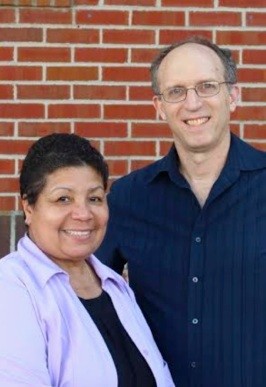As a teacher educator at Elon University, Jeff Carpenter works with students preparing to teach in seven different content areas and at multiple grade levels. The Question Formulation Technique (QFT) has been helpful in his work because it is a simple, flexible strategy that can be used at different grade levels and in any content area. The QFT is both an approach that can enhance his own classes as well as a strategy that his students can apply in their field placements in schools and student teaching. He now includes the QFT in some way in almost every course he teaches.
by Jeff Carpenter
Can you describe how you implemented the Question Formulation Technique in your course?
The process itself has been easy for my students to grasp, and I have done question generation exercises that range from 10 to 60 minutes in length. We typically write our questions on the poster-size Post-it notes that can go up on our classroom wall for future reference. In my Teaching Diverse Learners course, half way through the semester I divide the class into groups, each of which is tasked with becoming expert on a particular topic: Race/Culture/Ethnicity, Sexual Orientation, Socioeconomic Status, or Linguistic diversity. The groups are responsible for teaching their peers for one of the three class periods that will cover their topic, while the other two lessons are my domain.
How do you or your students prepare a project like this?
Before preparing for this project, we run a round-robin version of the QFT, generating a prioritized list of questions for each of the four topics. This both spurs some good initial thinking and provides the students with a sense of what their peers want to know about the topics. The student groups pick which of the questions they want to answer, and I take charge of determining how the remaining questions will be addressed.
What are some of the effects you have noticed in using the QFT?
Given the broad nature of the topics for this project, it is helpful for the students to have questions that help them narrow their focus. In the past, I have sometimes found that student attention wanes during peer presentations, but the focus on answering questions generated by the class has helped increase the presentations’ relevance.
Has the QFT reframed the way you teach certain topics? If so, how?
It has. In my Teaching in 21st Century Classrooms course, we spend a substantial amount of time looking at how technology can support more student-centered and collaborative learning. However, the QFT provides a great example of how technology is not always necessary to achieve this desired goal. We first use the QFT to generate questions about classroom management, a topic of much interest to these seniors who will be student teaching the following semester. Those questions help guide our ongoing study of classroom management throughout the semester.
How do you apply the QFT to the variety of subjects your students teach?
We talk through how the QFT works, and brainstorm ways it could be applied in students’ field placements. The students have consistently been able to identify numerous potential applications across their different content areas, and many do immediately experiment with using the QFT. Several students have commented on the QFT’s potential to facilitate both engagement and differentiation. Thus far, my students preparing to teach English and Social Studies have utilized the QFT most frequently, often at the beginning of units to determine what students know and want to know about the units’ content. Several graduates have also reported using the QFT in their first year of teaching, with good results.
Could you describe some challenges in using the QFT with new teachers?
To date, the most significant challenge I have experienced with the use of the QFT with teacher education students is in their conceptualization of the “Next Steps” stage of the process. Some of them need additional support in imagining and structuring these next steps. In a few cases, student teachers have had their students respond very well to the question formulation process, but then the student teachers struggled to capitalize on that engagement with well-structured next steps. This is, however, not an indication to me that there is a particular problem with the QFT; it simply means that novice teachers may need support in designing that stage of the process. My students have thus been receptive to the QFT both as students, and as future teachers. And for me, the QFT is an approach that allows me to model a type of pedagogy I want my students to use in their own future classrooms.





We would love to include this blog post on our website — or have a similar post — sometime soon. Please let me/us know if this would be possible.
Many thanks!
Deborah
That would be great Deborah! Feel free to share the blog on your site (please link back to RQI). You may also be interested in our co-founder’s blog related to social and emotional learning: https://v1.rightquestion.org/blog/can-emotional-intelligence-be-taught/.
Feel free to email me with any questions or comments lavada@v1.rightquestion.org
I’m interested in knowing what happens after the questions have been formulated and discussed. I love the technique it will get the students minds going and ready to work since they will be working on what interests them since they generated the questions. However, I would like to know how this technique ties into a basal reader I must use and in teaching social studies in middle school? I can see a clearer lesson in social studies using this technique. I’m Interested in seeing a sample lesson. I want to know what happens after the question and sharing.
Nelly (@ngallardo41) Have you tried the strategy in your classroom yet? You can decide how students will use the questions. Typically, its with a project, paper, experiment, or discussion throughout the unit.